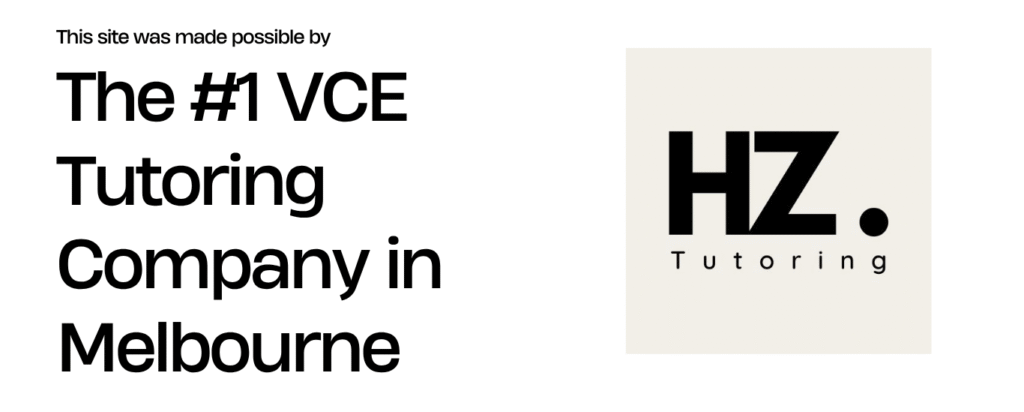Your cart is currently empty!
VCE Physical Education Unit 2 AOS 2
Hormonal Considerations for Physical Activity Prescription
An individual’s endocrine system plays a critical role in how the body responds to the stress of physical activity. Understanding hormonal responses, especially related to the HPA axis, HPT axis, and the female menstrual cycle, is essential for designing safe and effective training programs that optimise performance and prevent injury.
Training & The Menstrual Cycle
Hormonal fluctuations during the menstrual cycle impact energy availability, strength, and recovery. “Cycle-syncing” workouts by applying the FITT principle differently in each phase is a sophisticated, individualised approach to training prescription. Click the buttons below to see how training recommendations change.
Injuries and Safety in Sport
Injuries are a significant intrapersonal factor that can impact participation and performance. Understanding the cause, prevention, and management of common injuries is a key competency. This section focuses on two prevalent and serious injuries: concussion and knee injuries.
Focus: Concussion Management
A concussion is a traumatic brain injury that must be managed with extreme caution. The Graduated Return to Play (GRTP) protocol is a mandatory, medically supervised process to ensure a safe return to sport. Click on each stage below to learn more about the steps involved.
Focus: Knee Injuries
The knee is highly susceptible to injury in sports involving jumping, pivoting, and sudden changes of direction. Common injuries include ACL tears, meniscus tears, and patellar tendonitis. Prevention focuses on strength training (quads, hamstrings, glutes), improving biomechanics (especially landing technique), and maintaining flexibility.
Psychological Skills and Strategies
An athlete’s mental state is as crucial as their physical condition. Psychological Skills Training (PST) is the systematic practice of mental skills to enhance performance. Key strategies include goal setting, arousal regulation, mental imagery, and improving concentration.
Key PST Strategies
- Goal Setting (SMARTER): Setting Specific, Measurable, Accepted, Realistic, Time-phased, Exciting, and Recorded goals focuses attention and increases motivation.
- Arousal Regulation: Using the Inverted-U Hypothesis to find the optimal level of arousal. Techniques include PMR and controlled breathing to reduce arousal, or psyching up to increase it.
- Mental Imagery: Using all senses to create or recreate an experience in the mind. This strengthens neural pathways without physical fatigue.
- Concentration: The ability to focus on relevant cues. Choking is a common breakdown where focus shifts inappropriately under pressure.
- Sleep: A vital psychological and physiological recovery strategy. Lack of sleep impairs glucose metabolism, disrupts hormone release (HGH, cortisol), and harms cognitive function.
Mental Fitness
Mental fitness has emerged as a crucial intrapersonal factor, moving beyond performance psychology to encompass an athlete’s overall psychological health and wellbeing. It’s a proactive concept focused on building psychological strength, resilience, and coping skills.
The Responsibility of Elite Sport Pathways
There is a growing recognition that high-performance pathways have a profound duty of care for athletes’ mental wellbeing. This is being formalised through:
- National Programs: The AIS runs programs like the “Mental Fitness Program” and provides a “Mental Health Referral Network” for athletes.
- Psychologically Safe Environments: Pathways are now expected to embed positive psychology, promote mental health literacy, and establish clear, confidential support channels.
- Holistic Development: The focus is shifting from developing just the ‘athlete’ to developing the ‘whole person’, providing coping skills for life within and beyond sport.
Geographic Location: Rural vs. Urban
Where an individual lives in Australia is a significant interpersonal factor that shapes their opportunities in sport. While stereotypes exist, the reality is complex, with unique barriers and enablers in both rural and urban settings.
Chart showing the higher prevalence of physical inactivity in rural areas compared to urban areas, challenging common stereotypes.
Rural & Regional Areas
Barriers:
- Limited access to facilities
- Vast travel distances
- Higher socioeconomic disadvantage
Enablers:
- Strong social connection via clubs
- Deep cultural significance of sport
Urban Areas
Barriers:
- Higher levels of sedentary behaviour
- Passive transport and sedentary jobs
Enablers:
- Greater access to facilities/services
- More opportunities for leisure-time exercise
- Supportive built environments (e.g., bike paths)
Coaching Styles and Ethics
The coach is one of the most influential figures in an athlete’s journey. Their style and ethical conduct directly impact an athlete’s motivation, enjoyment, skill development, and wellbeing. Explore the different coaching styles below.
Autocratic (Authoritarian)
A highly directive, coach-driven style where the coach makes all decisions with little input from athletes. It’s characterised by strict discipline and a focus on winning. While it can work in specific situations, it often undermines athlete autonomy and intrinsic motivation, and is generally considered the least effective style for long-term development.
Ethical Behaviour and Safeguarding
A coach’s primary role is to ensure the long-term interests and wellbeing of the athlete are prioritised over short-term results. In Australia, the National Integrity Framework provides policies on child safeguarding. Coaches have a legal and ethical duty of care and must report any suspicions of abuse.
Sports Technology and Media
Technology and media are powerful forces reshaping sport. Technology offers tools for enhancing performance and safety, while media influences societal beliefs, behaviours, and participation trends.
Influence of Technology
- Data-Driven Training: Wearables (GPS, heart rate monitors) allow for individualised, objective training load management.
- Technique Analysis: High-speed cameras and motion analysis software identify and correct subtle flaws.
- Equipment Advances: Aerodynamic fabrics, compression garments, and 3D-printed custom gear.
- Safety & Recovery: Load monitoring to prevent injury, cryotherapy for recovery, and VR for mental preparation.
- Officiating: Video review systems (VAR) and electronic timing improve accuracy and fairness.
Impact of Media
Positive:
- Promotes sports and creates role models.
- Drives grassroots participation.
- Increases fan engagement via social media.
Negative:
- Body Image: Unrealistic “ideal” athletic bodies on social media cause body dissatisfaction and lead to sports attrition, especially among adolescent girls.
- Stereotypes: Underrepresentation of female athletes, athletes with a disability, and those from diverse backgrounds reinforces harmful stereotypes.
Institutional Inclusion and Equity
Sporting organisations have a fundamental responsibility to create environments that are inclusive (where people feel they belong) and equitable (where everyone has fair access). This involves proactive and intentional change to support diverse population groups.
Sport is a powerful “cultural community connector.” True inclusion requires creating culturally safe environments, which involves community-led initiatives, visible respect for culture (e.g., Welcome to Country), representation in leadership, and robust anti-racism policies. Best practice examples include NASCA and John Moriarty Football.
Barriers for CALD communities include language, cost, transport, and a lack of cultural understanding from clubs. Effective strategies involve building trust through genuine engagement, co-designing programs, and using inclusive communication.
Inclusion involves adapting environments, equipment, and rules. Organisations like Disability Sports Australia and Sport Inclusion Australia lead national efforts, while local clubs can offer modified programs and provide specific training for coaches.
Creating safe and affirming spaces is critical. Initiatives like Pride in Sport and Pride Cup help educate clubs. Key strategies include using inclusive language (e.g., correct pronouns), offering non-gendered uniform and bathroom options, and having clear anti-discrimination policies.
Gender Equity in Australian Sport
Gender equity—the process of being fair to women and men—is one of the most prominent contemporary issues. Key battlegrounds include the gender pay gap and the severe under-representation of women in leadership roles.
The Gender Pay Gap
A substantial pay gap persists between male and female athletes. This chart illustrates the disparity in median annual income for full-time sportspersons.
Representation in Leadership
Despite high grassroots participation, women are severely under-represented in positions of power and influence. This chart shows the percentage of women in key roles against the 50% equity target.
Policy Intervention
The National Gender Equity in Sport Governance Policy (2024) is a landmark reform. It mandates that sporting organisations receiving government funding must achieve 50% representation of women on their boards by July 2027, or risk having funding withheld. This top-down policy aims to force structural change in the industry.

